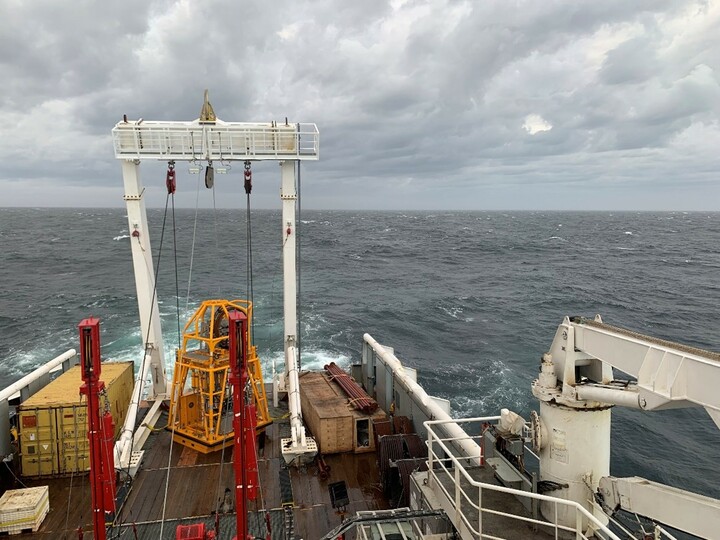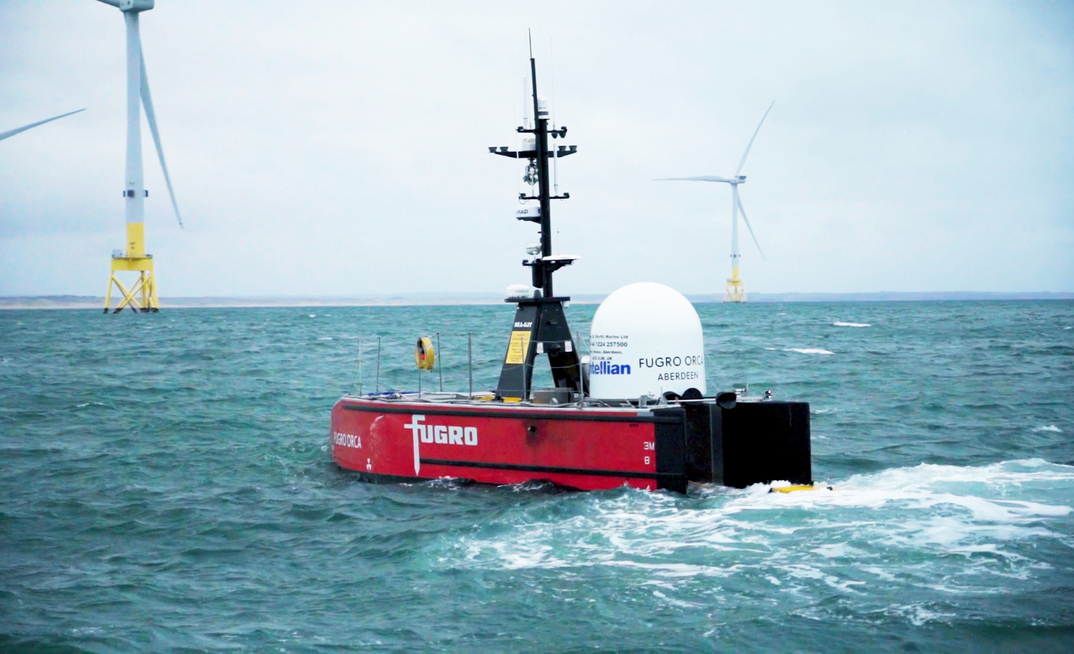During the last decade, many companies that were born to service the offshore oil and gas industries have successfully moved into offshore wind and (carbon capture and storage) CCS. However, with wind continuing to expand rapidly, a growing demand for CCS, and an upturn in oil and gas activity, trying to serve all industry sectors requires an optimal transfer of equipment and expertise between industries.
With over 30 years of expertise in oil and gas-related services, Geo-data specialist Fugro is one of the companies that has successfully evolved technology and talent to meet the needs of both industries, with approximately 50% of all offshore wind farms having benefitted from some kind of Geo-data provided by Fugro.
"A significant challenge for companies working in both sectors is developing safe, low-carbon, market-agnostic technologies that can be utilised throughout the project-asset lifecycle. Although oil and gas and offshore wind have similarities, they are fundamentally different sectors with different engineering needs, so it can sometimes be a complex challenge to develop flexible and futureproof technologies that appeal to both sectors, especially when those technologies are utilised in site exploration, design, manufacturing, construction and monitoring," Brian Bell, global director offshore wind, Fugro, said. "It is, therefore, essential that all stakeholders continue to work together to synchronise and standardise where possible."
From oil platforms to wind turbines
While a decline in oil and gas activity has long been expected due to global renewable targets, recent geopolitical events have led to a surge in both sectors. The gradual decline expected leaves a window of opportunity for existing assets to complete their productive lifetimes, paving the way for a transition to offshore wind.
YOU MIGHT ALSO LIKE
However, this shift presents a key challenge: aligning investments with the needs of the wind sector while adapting operational models and retraining personnel. Successfully navigating this transition will be critical to leveraging the expertise and infrastructure of the oil and gas industry in offshore renewables.
Fortunately, many companies are doing just that. Global engineering and construction company Saipem is one of them. Having contributed to the installation of 8GW of offshore wind projects over the last decade, the company has successfully transferred much of the EPCI know-how developed through decades in the oil and gas sector. A company representative explained: "To fully capitalise on this transferable know-how, specific investments and a cultural shift in our fabrication sites have been already implemented. The challenges in this transition include adapting to the different scale and volume of production and the unique requirements of wind energy projects. We are actively focused on transforming these sites into serial production plants capable of delivering large volumes of standardised products within reduced timelines.
"Additionally, we can leverage our offshore installation expertise and part of our offshore fleet, including heavy lifting vessels (HLVs) like the Saipem 7000, which are essential for installing large foundations and electrical stations."
While the sectors share some similarities in engineering needs, several significant changes exist, especially regarding the sites they occupy and how developers wish to understand them.
"Offshore wind developers are particularly interested in the composition and properties of the upper 50m to 100m of seabed across the entire site to ensure robust foundations can be designed which last the 30-year plus lifespan of the wind farm," Bell explained. "To provide these insights across a wide variety of seabed conditions, we have developed several in-house geotechnical technologies such as enhanced soil penetration capacity using our SEACALF MkV Deep Drive advanced seabed cone penetration test (CPT) system and higher weather workability with our SEADEVIL wireline coring system."
One challenge of the wind industry is the speed by which demands change and evolve. Changing foundations, increasing depths and more considerable distances are all factors that constantly require engineering companies to adapt and apply new solutions. One important factor enabling this development has been the availability of easily adaptable technologies and equipment providing robotic and autonomous solutions.

One such is Fugro's uncrewed surface vessels (USVs) equipped with electric remotely operated vehicles (eROVs), which conduct visual or sensor-based subsea inspections. "Having utilised this technology in oil and gas, we are also able to offer similar services in offshore wind to map, model and monitor the natural and built environments," Bell said. "Furthermore, as floating wind matures, we are able to harness our oil and gas expertise to provide engineering insights, which support site exploration, mooring design, condition monitoring strategies and more."
Filling out the gaps
While many companies are successfully navigating the shifting waters of oil and wind projects, with renewable targets comes a sea of other demands. According to Saipem, meeting this challenge will require fine-tuning investments to align with the offshore wind segment's requirements and the development of a wider spectrum of technological solutions. The company explained: "Saipem has developed industrialised solutions for energy transition projects, including Bluenzyme 200 for CO2 management, with already 10 active CCUS projects, IVHY 100 for hydrogen generation, as well as the proprietary Star1 technology for offshore floating wind projects."
Most offshore CO2 storage sites are selected using legacy oil and gas exploration data, which is primarily focused on the deep subsurface located several kilometres beneath the seabed. This leaves a gap to be filled by companies like Fugro, which have developed expertise in providing geophysical data through decades of doing so for the oil and gas industries.
"This data often provides limited information about the shallow subsurface and the seafloor, leading to uncertainties. Here, the geophysical data we're able to capture as Fugro lets us resolve existing data gaps and improve legacy subsurface interpretation models," Yosmel Sanchez, Global CCS Lead, Fugro, said. "Clients' expectations around data delivery have also changed. As technology and connectivity improve whilst timelines accelerate, many stakeholders now expect insights in near real-time. This provides opportunities for machine learning, AI and cloud-based data management services such as our integrated Virgeo platform, which improves operational efficiency by giving development teams a full geospatial overview of field acquisition activities so they can react quickly to new insights."
Building on the past
Though often seen as opposing markets, wind and CCS projects are commonly operated by oil and gas developers aiming to fulfil renewable targets. This makes the ability to quickly adapt and translate technology and expertise from one sector to the other especially beneficial as clients bring their experiences and expectations with them.
Indeed, expectations and demands might be growing by the minute, but when asked if existing capacities can be transferred or modified to meet the rising demands, the answer is uplifting. Bell said: "Absolutely, yes. For many years, we have developed and refined our offshore CPT technologies to meet the evolving needs of our oil and gas clients, and over the past decade, we have applied what we have learned to our renewables projects. This includes deeper CPTs with minimal manual handling, improved ground modelling through seismic inversion technology, and enhancing offshore laboratories to accelerate delivery."
With its ongoing CCUS projects and a strong focus on the offshore wind sector, Saipem is equally confident that the company's continuous innovation and investment in capabilities will help it meet the challenges of integrating new technologies and adapting to the specific requirements of wind energy. "Our established competencies not only allow us to respond quickly to market demands but also reassure stakeholders of our readiness to adapt to the evolving industry."



















